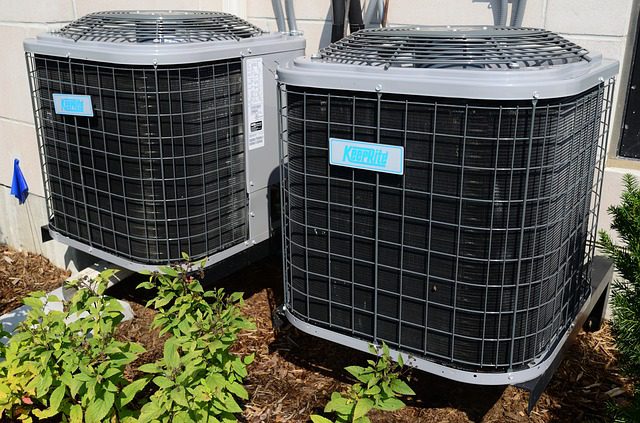The ABCs of How Air Conditioning Makes Your Home Comfortable

For a lot of folks, the science behind air conditioning is a total mystery, but not one that many of us spend much time solving or even contemplating. If it’s cooling the house, who cares how it works? Well, the thing is, if you have a rudimentary idea of how this appliance cools and dehumidifies your home, you’ll be better equipped to troubleshoot problems when they arise, and even perform basic maintenance or repairs.
The basic technology is known as the refrigeration cycle, among other terms and phrases.
How the Refrigeration Cycle Works
It’s important when explaining the refrigeration cycle to start with the chemical solution, “refrigerant” or “coolant,” that’s at the core of this technology. For many years, the standard refrigerant was R-22, commonly known by one of its brand names, Freon. In recent years, R-22 has been phased out for environmental reasons, with R-410A (one brand name is Puron) taking over. More recently, continuing concerns about these chemical solutions’ impacts on climate change and the environment have resulted in a planned phase-out and replacement of R-410A.
Whatever refrigerant that’s in use, the main trait that makes it useful for refrigeration/air conditioning is that this solution evaporates, or boils, at extreme subzero temperatures. When refrigerant does this, transitioning from a liquid to a gaseous state, it pulls heat from the surrounding air. On the other hand, when refrigerant is placed under high pressure, it turns back into chilled liquid form.
An AC or heat pump takes advantage of these unique qualities when it pumps refrigerant through two copper (or other type of metal) coils. In the common split-system AC or heat pump (in cooling mode), the evaporator coil is inside the house, either part of a stand-alone air handler or attached to the home’s furnace, while the condensing coil is part of the outdoor component of the split system, the condenser/compressor.
Evaporation and Air Conditioning
As refrigerant moves through the evaporator coil, an expansion valve lets up on the pressure its under, allowing the solution to boil/evaporate. As this process takes place, the refrigerant extracts heat and moisture from the surrounding air. The removal of heat energy and moisture make the indoor air feel cooler and dryer – in other words, air conditioning!
Compression, Condensation and Air Conditioning
Next, the refrigerant, now in gaseous form, gets pumped to the outside unit where the compressor puts it under intense pressure, which turns the refrigerant gas back into a liquid. When this happens, a powerful fan disperses the heat that was removed from inside the house into the outside air, and the process starts all over again. Fans in both the inside and outside units blow air across the coils to facilitate the heat exchange.
Air Circulation and Distribution
Of course, none of this process will do a bit of good unless the cooled, dehumidified air has a way of being distributed to the rooms in your house. In many homes that are heated by a combustion furnace, the blower for the furnace also circulates air cooled by the refrigeration process. In stand-alone central ACs and heat pumps, an air handler serves the same purpose. In both cases, the fan blows the cooled air through a network of “supply” ducts that deliver the air through vents and registers in various rooms throughout the house. The spent air is then drawn by the fan via “return” ducts back to the air conditioning unit.
